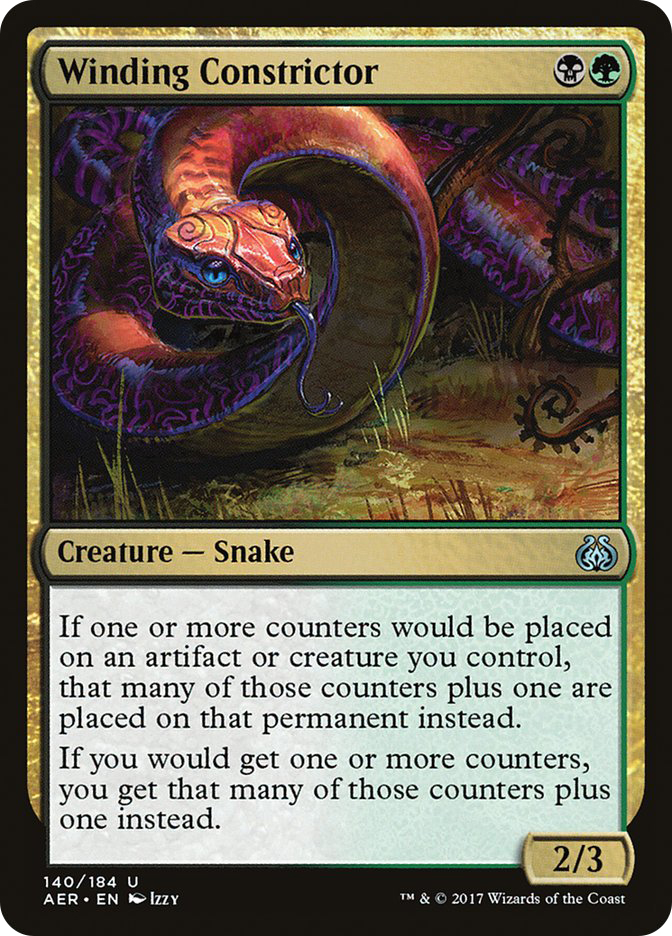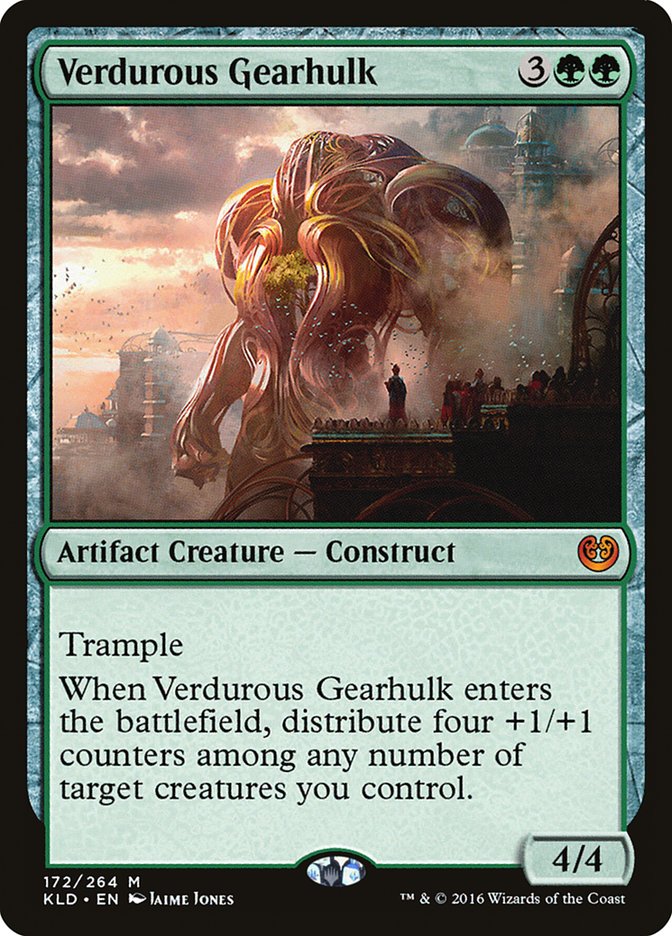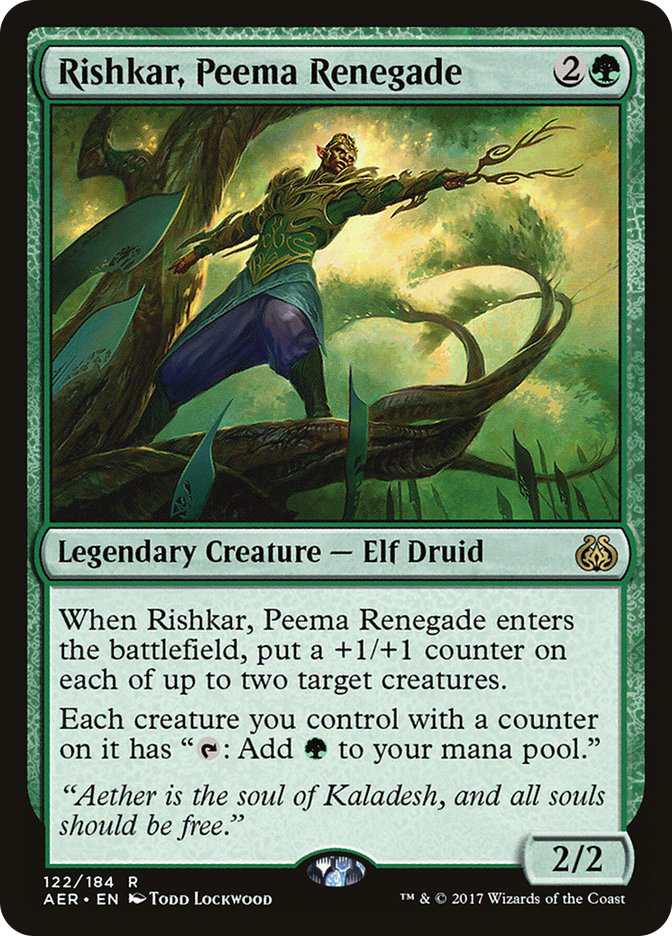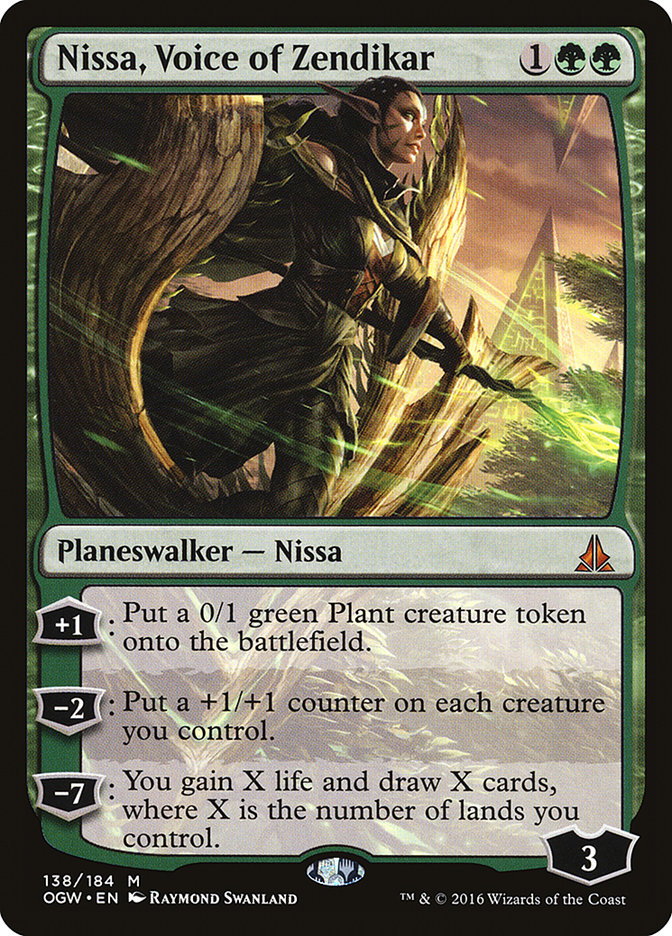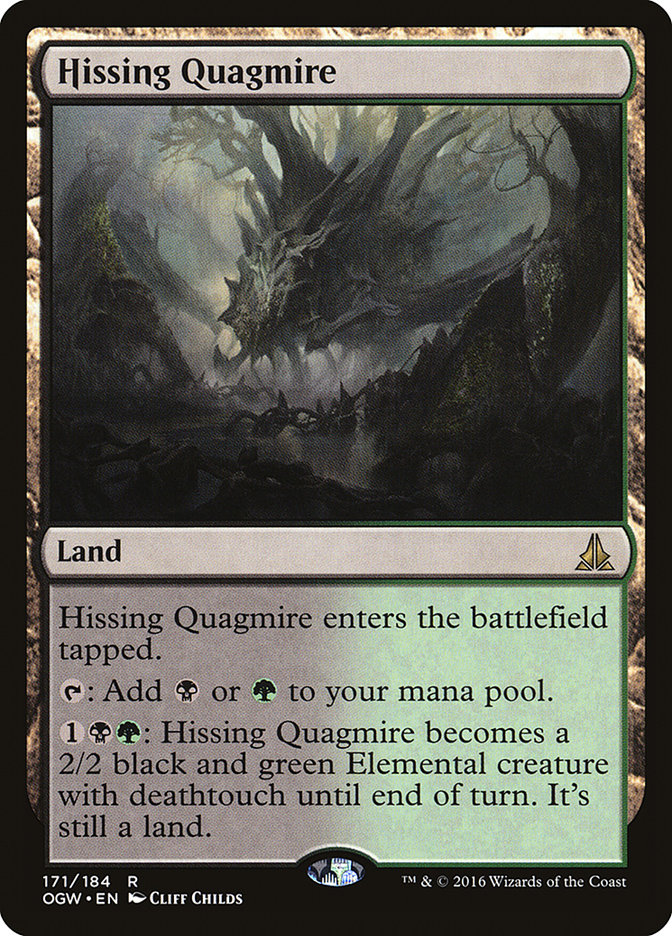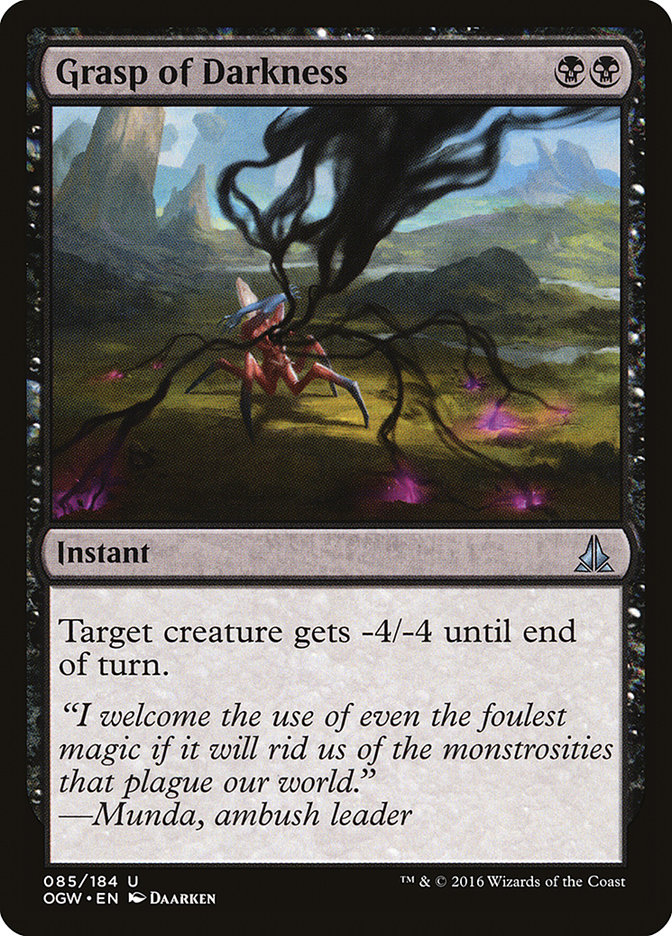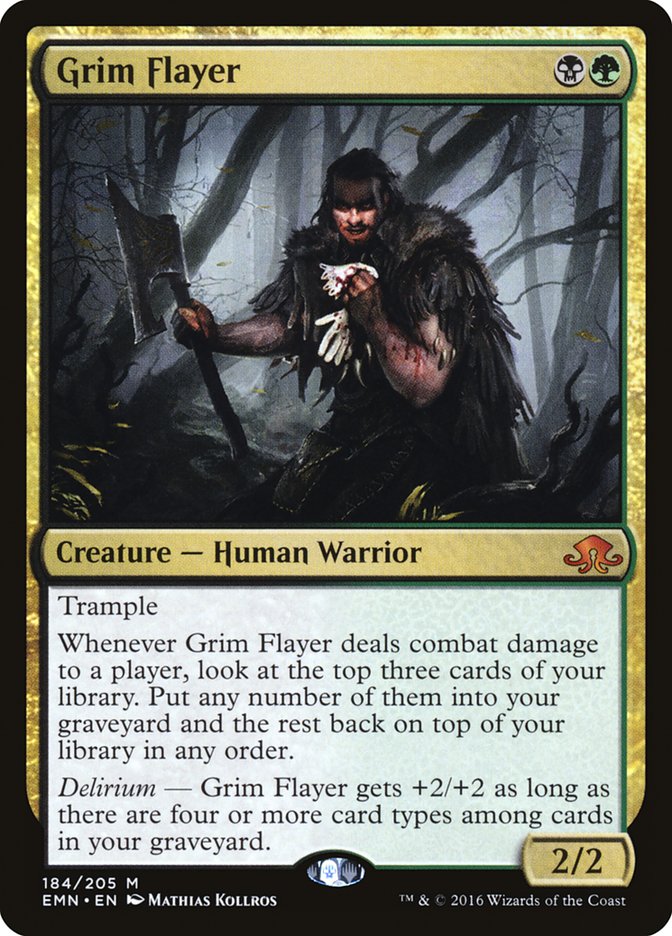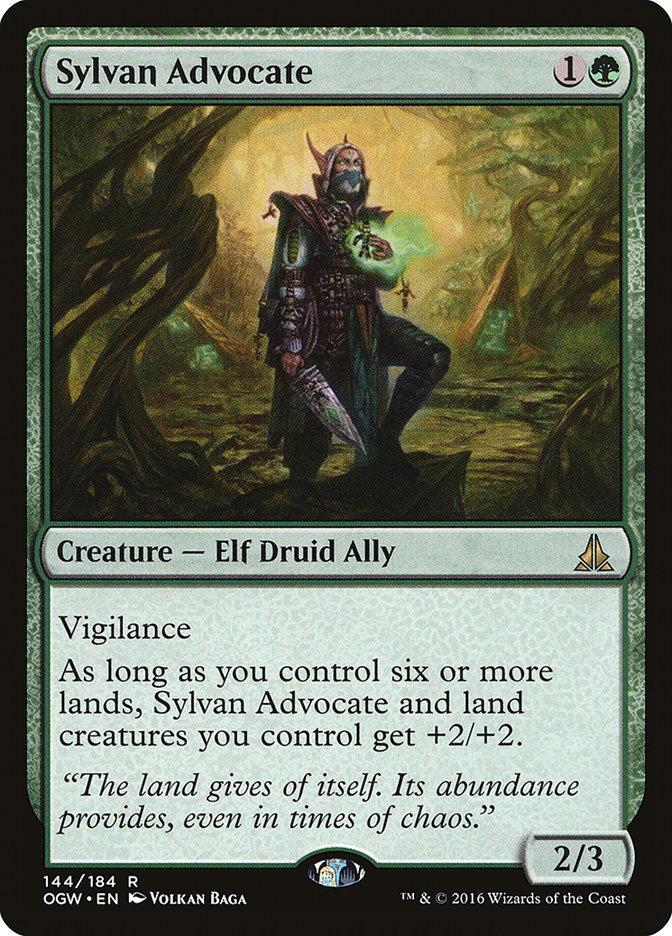Sadly, I won’t be competing at #SCGDFW this weekend. If I were going, I’m sure my testing process would be in Stage 3 right now.
Ever since the release of Kaladesh, my Standard testing process has almost always used the same three stages.
Stage 1, zero to five test games played: Stare starry-eyed at Winding Constrictor, fully convinced that this little Snake has what it takes to carry me to a first-place finish.
Stage 2, ten to twenty test games in: Throw my hands up in the air, decry the viability of Winding Constrictor in the current metagame, and begin to look at other options.
Stage 3, 30 to 50 games under my belt: Stare starry-eyed at Winding Constrictor, fully convinced that this little Snake has what it takes to carry me to a first-place finish, but with actual logic and reasoning.
I jest, but I have played a lot of Winding Constrictor in the last year. I’ve even written about it a couple of times. Admittedly, I played the Snake a few times when I shouldn’t have. That’ll happen when you grow overly fond of a strategy. But the truth is, the number of times I made a mistake by playing Winding Constrictor is a lot lower than you might expect. I’ve played a variety of different Winding Constrictor decks, and the strategy is flexible enough to be strong in a variety of fields.
Since I’m not actually going to #SCGDFW, I haven’t begun this process yet. So if we’re going to get through all three stages in one article, we better get started.
Stage 1: Winding Constrictor Is So Dreamy!
So what makes a Winding Constrictor strategy something that we should look into for Week 1 Ixalan Standard?
For me, the motivation begins and ends with Walking Ballista.
The synergy between Walking Ballista and Winding Constrictor is proven to be powerful and really shines when creature strategies are out in force. The smaller the creatures, the better Walking Ballista is. Going into #SCGDFW, Temur Energy and Ramunap Red are two of the most-hyped strategies. Winding Constrictor-powered Walking Ballistas are very valuable assets to have against the likes of Whirler Virtuoso, Bomat Courier, and Earthshaker Khenra. Both of these strategies even overlap on Chandra, Torch of Defiance, a card that Walking Ballista plays surprisingly well against.
Further, Walking Ballista is just the kind of card that is very good in true Week 1s. True Week 1s, as in formats impacted by not just the addition of a new set, but the subtraction of others as well. Decks from true Week 1s always end up looking way different from their eventual stock lists, and the reason is simply that there isn’t enough time to end up at tuned lists for Week 1.
What this means is that, Week 1, you should expect to be playing a list that is inefficient in some way. No matter how much you tested, how long you spent on it, it’s a guarantee that you missed something. One person in two weeks just can’t do the work of thousands over a few months. It’s impossible. Your curve will be off Week 1, and what this ends up meaning is that you will have trouble using your mana efficiently.
Enter Walking Ballista. Mana sinks are especially powerful Week 1, as they allow you to compensate for your mana curve being slightly off. Walking Ballista ensures that you will be able to spend more mana than your opponent in games that go long, and that can be the difference between Week 1 success and Week 1 failure.
Another consequence of Week 1 decks being suboptimally tuned is that they are especially prone to stumbling. Being able to take advantage of that stumbling is a great place to be, and nothing in Standard takes advantage of a slow start better than Winding Constictor into Rishkar, Peema Renegade. Throw Verdurous Gearhulk into the mix and your opponent really can’t afford to miss a beat.
This concept is the idea that aggressive decks, particularly red decks, have so often done well in the first big tournament of a new format. These decks punish the opposition for stumbling and see heightened success Week 1 when opponents are more prone to stumble. It’s a simple formula, and one we’ve seen ridden to Week 1 success many times.
Of course, all of this begs the question: why not just play Ramunap Red? Well, there is a very real advantage to being the B/G deck that punishes stumbling rather than the red deck that does so: you are advantaged in the head-to-head matchup. B/G plays creatures that are just slightly bigger than those in the aggressive red decks, and that has traditionally been a good place to be. Add in Walking Ballista and the ability to still take advantage of opponents stumbling, and I’m all about the Winding Constrictor train.
Stage 2: This Isn’t Going to Work!
Wait, why is the Winding Constrictor train just sitting in the station? Shouldn’t it have departed by now? Oh, one of the engine cars is missing. That explains it.
The rotation of Nissa, Voice of Zendikar is a big deal to Winding Constrictor decks. Nissa wasn’t originally a critical piece of the Winding Constrictor puzzle, but as sets were added to the big Standard format we’re just now leaving, Nissa’s importance to the deck rose and rose. Against many strategies, the sheer power of the synergy between Winding Constrictor and Nissa, Voice of Zendikar was B/G’s best chance of victory.
Nissa gave the deck speed and incentivized it to play a lower curve and cards that provided multiple bodies. Without Nissa, Catacomb Sifter would have never seen play. Cards like Sylvan Advocate and Gifted Aetherborn made their way in and out of the deck based on the needs of the format at large, but neither would have been playable on their own without the synergy between Nissa, Voice of Zendikar and being a 2/3.
The good news, if you can call it that, is that a lot of the reasons Nissa, Voice of Zendikar was so critical are also gone. There’s no longer any need to create a quick and powerful 4/5 army to attack a Gideon, Ally of Zendikar down. Zombies have been put to rest, and we no longer need to compete with any deck on a pure synergy axis.
In short, the loss of Nissa, Voice of Zendikar is a huge power level hit to the B/G Winding Constrictor decks. But with four sets rotating out of Standard, no deck will be quite as powerful as the ones from Hour of Devastation Standard, so maybe the loss of Nissa is not as insurmountable as it once appeared.
But Nissa isn’t the only thing B/G Constrictor is feeling the loss of in Ixalan Standard. The rotation of Hissing Quagmire causes a lot of problems for the deck. First and most obviously, the B/G color pair now has worse mana. This isn’t an insurmountable issue, as Foul Orchard is still Standard-legal, but no one wants to play Foul Orchard.
Honestly, there aren’t many land-based reasons to want to play an enemy-colored deck right now. The only good multicolor lands for those combinations are the Kaladesh fastlands. Access to one multicolor land isn’t really enough to make a color pair consistent. Sure, you could play Foul Orchard-esque lands, but you end up with a manabase that is significantly less powerful than those of ally-colored decks and a spell base that is less powerful than the three- or more-color decks. Not a great place to be.
Further, B/G made pretty good use of its creature-land. Getting counters onto a land that the opponent couldn’t interact with at sorcery speed was a very real plan in a lot of matchups. And the deathtouch on Hissing Quagmire made it the strategy’s best answer to an out-of-control Bristling Hydra, or really any large threat, as even without hexproof the deck’s removal suite was not geared towards answering five-drops with more than four toughness. None of this is a deal-breaker, but taken all together it’s clear that the loss of Hissing Quagmire is something to take seriously.
Cards besides Nissa, Voice of Zendikar and Hissing Quagmire that were played in B/G Constrictor rotated out too, but none of them were especially notable. The loss of Grasp of Darkness will be felt, but can be worked around. Grim Flayer and Traverse the Ulvenwald are gone, forcing our hand in which direction to take our Winding Constrictor decks. Sylvan Advocate and Catacomb Sifter are gone, but we wouldn’t want either of those without Nissa, Voice of Zendikar anyway.
Stage 3: Actually, We Can Make This Work
Even with these very real losses, I’d be super-excited to play Winding Constrictor at #SCGDFW. Restrictions breed creativity, or, in this case, a functional Winding Constrictor list. Working from the cards Constrictor lost, we can move towards finding a new version for Ixalan Standard.
The first thing that strikes me with the loss of Nissa, Voice of Zendikar is that we need to find a new source of synergy. Delirium is all rotated out, so we can’t take the deck in that direction. But energy is still alive and well, and comes with the bonus benefit of getting to play with Aether Hub, fixing some of our newfound mana issues. How delightful.
Playing up the energy angle of B/G Constrictor seems like the route to go, but how are we supposed to do that without Nissa, Voice of Zendikar? The recent Energy versions of B/G pushed Nissa about as far as she would go, throwing Longtusk Cub into the mix to really make sure the aggressive potential of the deck was at a maximum. That won’t work anymore. But, good news: go back far enough, and there’s another B/G Energy style we can look at.
Creatures (27)
- 3 Tireless Tracker
- 2 Gonti, Lord of Luxury
- 4 Verdurous Gearhulk
- 4 Servant of the Conduit
- 4 Winding Constrictor
- 2 Rishkar, Peema Renegade
- 4 Glint-Sleeve Siphoner
- 4 Walking Ballista
Lands (24)
Spells (9)

Brad’s list from Pro Tour Aether Revolt took B/G Constrictor in a direction that looks quite appealing in the dawn of Ixalan Standard. In the many, many hours I spent working with B/G Energy lists, I developed a simple maxim: you want either Servant of the Conduit or Attune with Aether, never both. Attune with Aether is mandatory if you want to play with Longtusk Cub, but Servant of the Conduit makes your Verdurous Gearhulks (note that Brad played all four) better and synergizes well with any Vehicles or Nissa, Voice of Zendikars that you might be playing.
Speaking of, Aethersphere Harvester seems like a good place to be this weekend. Throwing four counters onto it with a Verdurous Gearhulk is very hard for any deck to beat, let alone the low to the ground aggressive strategies that dominate Week 1. Abrade is a very real problem, but with the printing of Lightning Strike, we might very well be seeing fewer Abrades.
The one good thing about losing Nissa, Voice of Zendikar is how much better Glint-Sleeve Siphoner got. Siphoner was always awkward alongside Nissa, as it didn’t play defense well and didn’t receive +1/+1 counters very well either. Without Nissa to worry about, I am very excited to play with some Glint-Sleeve Siphoner.
And Ixalan Standard brings us some potential new goodies as well. Foremost among them, in my mind, Ruin Raider. Playing a Turn 2 Glint-Sleeve Siphoner and following it up with a Turn 3 Ruin Raider sounds like the dream to me. Raider is risky, as long drawn out games will make the life loss very real, but we can lower the curve somewhat and we do have access to supercharged Aethersphere Harvesters to gain some of it back.
With all of that in mind, here’s a B/G Energy list in this style updated for Ixalan Standard.
Creatures (25)
- 4 Verdurous Gearhulk
- 4 Servant of the Conduit
- 4 Winding Constrictor
- 3 Rishkar, Peema Renegade
- 4 Glint-Sleeve Siphoner
- 4 Walking Ballista
- 2 Ruin Raider
Lands (24)
Spells (11)

This is the direction I am the most interested in, and where I would focus the bulk of my testing if I had a Release Week tournament to play, It’s a more midrange take than the build we’ll look at in a second, and I think more capable of handling the kind of curveballs that Week 1 Standard tends to throw at you. Aethersphere Harvester alone might give you a substantial edge against a lot of the field.
But if you want to stick to the classic “kill ’em dead” Week 1 strategy, we can take a look at this prototype instead.
Creatures (27)
- 4 Longtusk Cub
- 4 Greenbelt Rampager
- 4 Winding Constrictor
- 4 Rishkar, Peema Renegade
- 3 Glint-Sleeve Siphoner
- 4 Walking Ballista
- 4 Bone Picker
Lands (20)
Spells (13)

I wouldn’t have thought you could make a version of B/G Constrictor that’s too aggressive for Nissa, Voice of Zendikar had I not seen this list. If anyone stumbles while sitting across the table from this monstrosity, the game will be over before they can even think about recovering. The downside is that it’s incredibly one-dimensional and plays so few mana sources that losing Hissing Quagmire is likely to be a huge obstacle. Losing Grasp of Darkness alleviates some of that, but having enough black mana sources is still a definite worry-point.
Creatures (29)
- 4 Longtusk Cub
- 4 Greenbelt Rampager
- 4 Winding Constrictor
- 4 Rishkar, Peema Renegade
- 4 Glint-Sleeve Siphoner
- 4 Walking Ballista
- 3 Bone Picker
- 2 Ruin Raider
Lands (20)
Spells (11)
Sideboard

The main points of note on this update for Ixalan Standard are reducing the need for black mana and adding Ruin Raider in. This list has no lifegain, yet kills so quickly and has such a low curve that the drawback on Ruin Raider is not likely be a huge factor.
Both of these lists have merit, and even though I would focus on the first one, I wouldn’t neglect to test the second. If you’re interested in playing Winding Constrictor at #SCGDFW, these lists should serve as great starting points for your exploration of Ixalan Standard.


